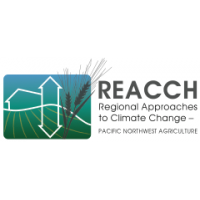The United States, Caribbean and Pacific Basin Major Land Resource Areas (MLRA) Geographic Database serves as the geospatial expression of the map products presented and described in Agricultural Handbook 296 (2006). Land resource categories historically used at State and national levels are land resource units, land resource areas, and land resource regions. Land resource units (LRUs) are the basic units from which major land resource areas (MLRAs) are determined. They are also the basic units for State land resource maps. LRUs are typically coextensive with State general soil map units, but some general soil map units are subdivided into LRUs because of significant geographic differences in soils, climate, water resources, or land use. LRUs generally are several thousand acres in size. A unit can be one continuous area or several separate areas that are near each other. In 2005, these areas were designated as common resource areas (CRAs) within the Natural Resources Conservation Service (NRCS). CRAs are created by subdividing MLRAs by topography, other landscape features, hydrologic units, resource concerns, resource uses, and human considerations affecting use and soil and water conservation treatment needs. Common resource areas, or land resource units, are not described in this handbook and are not shown on the national map. Major land resource areas are geographically associated land resource units. Land resource regions are a group of geographically associated major land resource areas. Identification of these large areas is important in statewide agricultural planning and has value in interstate, regional, and national planning. In order to make this handbook more useful to other Federal agencies and private parties using ecological regions for planning or evaluation of natural resources programs and policies, Appendix I (Agriculture Handbook 296, 2006) cross-references MLRAs with Environmental Protection Agency Level III Ecoregions (USEPA, 2003; Omernik, 1987) and U.S. Forest Service ecological sections (Cleland and others, 2005; McNab and others, 2005). In this handbook, major land resource areas are generally designated by Arabic numbers and identified by a descriptive geographic name. Examples are MLRA 1 (Northern Pacific Coast Range, Foothills, and Valleys); MLRA 154 (South-Central Florida Ridge); and MLRA 230 (Yukon-Kuskokwim Highlands). Some MLRAs are designated by an Arabic number and a letter because previously established MLRAs have been divided into smaller, more homogeneous areas, for example, MLRAs 102A, 102B, and 102C. The use of numbers and letters to identify the newly created MLRAs requires fewer changes in existing information in records and in databases. A few MLRAs consist of two or more parts separated for short distances by other land resource areas. In places one of these parts is widely separated from the main body of the MLRA and is in an adjoining LRR. The description of the respective MLRA also applies to these outlying parts.The original MLRA dataset was subsetted to only include the agricultual areas of the inland Northwest with the addition of the Latah CRA. This region is considered the study area for the REACCH project.
The web-service associated with this dataset is no longer active, please contact original data creator if you need to access these data.
Data and Resources
| Field | Value |
|---|---|
| Modified | 2006 |
| Release Date | 1970-01-01 |
| Publisher | |
| Identifier | {F15D3AA0-C406-4C3B-B460-A2DCAA1508E7} |
| Spatial / Geographical Coverage Location | -180,-90,180,90 |
| License | Creative Commons Attribution Non-Commercial Share-Alike (CC-BY-NC-SA 4.0) |
| Public Access Level | Public |
| POD Theme | geospatial farming |
| Harvest Source Title | REACCH PNA |
| Harvest Source URI | http://nknportal.nkn.uidaho.edu/final.json |
| Last Harvest Performed | Fri, 02/01/2019 - 17:30 |

